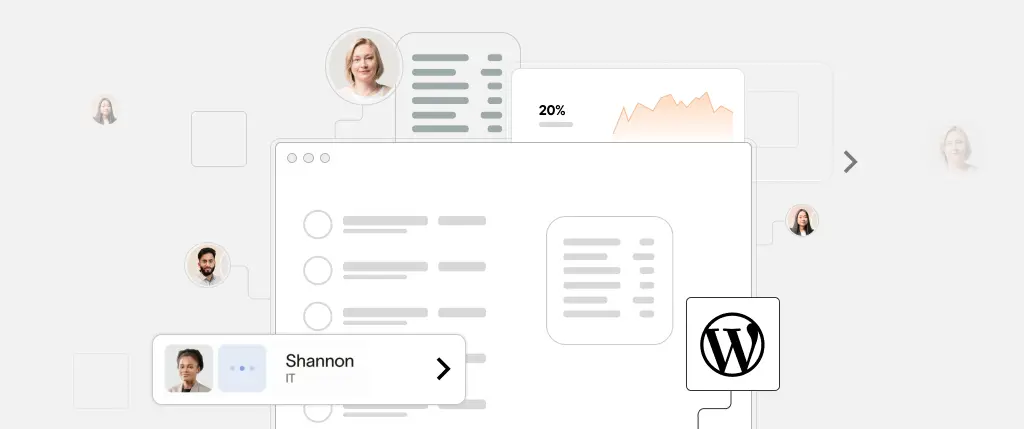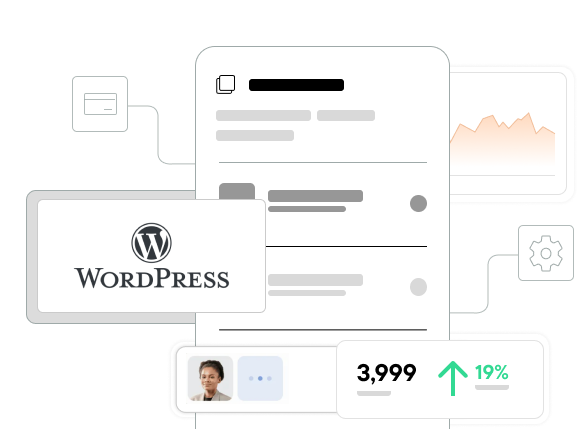Supercharge Your WordPress MarTech Stack with ACF and Custom Integrations
A modern WordPress MarTech stack is essential for scaling content operations, enabling personalization, and syncing seamlessly with your analytics and marketing tools. While WordPress is a flexible CMS, it needs structure and integrations to serve today’s marketing needs.
That’s where Advanced Custom Fields (ACF) and custom integrations come into play. With ACF, you can transform WordPress into a data-rich marketing engine—while integrating with CRMs, CDPs, analytics, and email platforms.
In this guide, we’ll walk through how to design a scalable, flexible WordPress MarTech stack using ACF and modern integration techniques.
What Is a WordPress MarTech Stack?
A Marketing Technology Stack refers to the suite of tools used to attract, convert, and retain customers. For WordPress users, the MarTech stack typically includes:
- CRM (e.g., HubSpot, Salesforce)
- CDP (e.g., Segment, RudderStack)
- Email marketing tools (e.g., Mailchimp, Braze)
- Analytics platforms (e.g., GA4, Heap)
- CMS (WordPress)
A strong WordPress MarTech stack ensures that your content, data, and customer interactions are synchronized and actionable across systems.
Why ACF Is Critical for Your WordPress MarTech Stack
Advanced Custom Fields (ACF) is the bridge between WordPress’s content model and your marketing data needs. It allows you to add structured fields to posts, pages, users, and custom post types.
Common ACF Use Cases:
- Landing page templates with customizable CTAs
- Campaign tracking fields (UTMs, goals, start/end dates)
- Product and pricing metadata
- Reusable content blocks for marketers
- Structured content for headless or API-driven sites
When integrated into your WordPress MarTech stack, ACF makes your site’s content structured, reusable, and programmable.
Structuring Campaigns with ACF + Custom Post Types
Here’s how to define marketing-specific post types:
register_post_type('campaign', [
'label' => 'Campaigns',
'public' => true,
'supports' => ['title', 'editor', 'thumbnail'],
'show_in_rest' => true,
]);Then use ACF to add fields like:
- Campaign Goal
- Target Audience
- CTA Button Text + Link
- UTM Parameters
- Launch Date
This allows your marketing team to launch campaigns independently—while maintaining consistency and enabling integrations.
Connecting ACF to Your CRM and CDP
Once data is structured in WordPress, use PHP hooks to sync it with external platforms like HubSpot or Segment.
Example: Sync Campaign Fields to CRM
add_action('acf/save_post', 'send_campaign_data_to_crm', 20);
function send_campaign_data_to_crm($post_id) {
if (get_post_type($post_id) !== 'campaign') return;
$data = [
'name' => get_field('campaign_name', $post_id),
'goal' => get_field('campaign_goal', $post_id),
'utm' => get_field('utm_parameters', $post_id),
];
wp_remote_post('https://api.your-crm.com/campaigns', [
'headers' => ['Content-Type' => 'application/json'],
'body' => json_encode($data),
]);
}This is how your WordPress MarTech stack becomes a connected ecosystem—reducing manual workflows and boosting campaign speed.
Personalizing Pages with ACF Data
Use ACF fields to dynamically adjust page content based on user traits or context.
Example: Personalized CTA for Logged-In Users
if (is_user_logged_in() && get_field('show_special_offer')) {
echo '<div class="promo-banner">Exclusive Offer Just for You!</div>';
}Combine this with JavaScript-based personalization or tools like Sitebox for advanced targeting.
Example Snippets for Developers
1. Render ACF-Based CTA
<?php if (get_field('cta_button_text')): ?>
<a href="<?php the_field('cta_button_link'); ?>" class="btn">
<?php the_field('cta_button_text'); ?>
</a>
<?php endif; ?>2. Send ACF Data to an API on Save
add_action('acf/save_post', function($post_id) {
if (get_post_type($post_id) !== 'campaign') return;
$payload = [
'title' => get_the_title($post_id),
'audience' => get_field('target_audience', $post_id),
'start_date' => get_field('campaign_start_date', $post_id),
];
wp_remote_post('https://external-api.com/sync', [
'method' => 'POST',
'body' => json_encode($payload),
'headers' => ['Content-Type' => 'application/json'],
]);
}, 20);3. Add ACF Fields to Headless Output
add_filter('rest_prepare_campaign', function($response, $post) {
$response->data['goal'] = get_field('campaign_goal', $post->ID);
$response->data['cta_link'] = get_field('cta_button_link', $post->ID);
return $response;
}, 10, 2);Best Practices for Managing Your WordPress MarTech Stack
✅ Modular Field Groups
Use reusable ACF field groups and flexible content blocks for easy scalability.
✅ Performance Awareness
Lazy-load complex fields or avoid exposing unnecessary data in your front-end templates.
✅ Data Governance
Maintain a schema that maps ACF fields to marketing tools like CDPs and CRMs. Align your dev team and marketers with shared documentation.
✅ Use Sitebox for Scale
For large teams or multi-site setups, Sitebox helps you:
- Centrally manage ACF field logic
- Push updates across sites without code conflicts
- Preview, test, and roll back changes safely
- Connect to CDPs/CRMs using no-code triggers
- Enforce standards across marketing teams
Sitebox turns WordPress into a governed, marketer-friendly platform—without losing developer control.
Final Thoughts: Empower Marketers with a Smarter WordPress MarTech Stack
A well-designed WordPress MarTech stack turns your CMS into a conversion-driving machine. When you combine ACF with strategic integrations, you unlock:
- Faster campaign launches
- Cleaner, more reliable marketing data
- Real-time personalization
- Seamless CRM/CDP sync
- Developer-free content workflows
Next Steps:
- Audit your current WordPress fields and content workflows
- Identify key data to sync with CDPs, CRMs, or analytics
- Use ACF to standardize content inputs
- Explore Sitebox to manage your stack across environments
Need help scaling your WordPress MarTech stack? Let’s talk.




